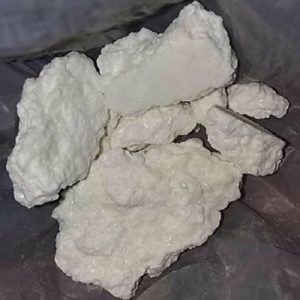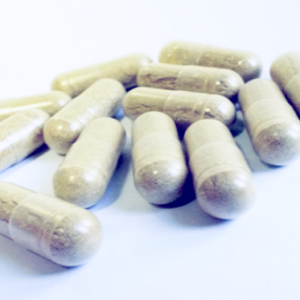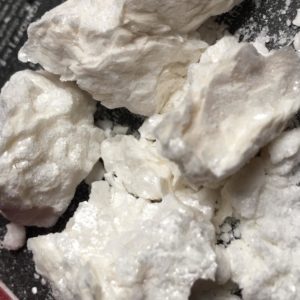Description
WHERE TO BUY COCAINE CANADA SAFELY:
Buy Cocaine Canada online from a trusted provider. Take advantage of fast, secure shipping and enjoy exclusive discounts.

WHAT WAS COCAINE ORIGINALLY USED FOR?
Generally, the history of cocaine is closely linked to its use as a medicine and local anesthetic.
Again, it is well known that coca leaves were used as a panacea and local anesthetic throughout the Inca empire in Peru.
Now, indigenous peoples chewed coca leaves to relieve fatigue, hunger, and altitude sickness, taking advantage of the mild stimulant effects of the alkaloid cocaine.
Later, in the 19th century, the active compound in coca leaves, cocaine, was isolated and began to be used as a powerful local anesthetic in surgery and dentistry.
To put it another way, further consolidating its medicinal applications.
COCAINE USE HISTORY (BUY COCAINE CANADA ONLINE:
Cocaine’s history goes back thousands of years and has evolved from its origins in indigenous cultures to become a global problem.
1. Ancient Uses:
Indigenous Cultures of South America: Cocaine comes from the coca plant (Erythroxylum coca), which is native to the Andes.
Indeed, indigenous peoples of Peru, Bolivia, Colombia, and Ecuador have been chewing coca leaves for over 3,000 years.
The leaves contain small amounts of cocaine, a stimulant alkaloid, which was used to combat fatigue, hunger, and altitude sickness, particularly in high-altitude regions.
19th Century:
2. Early 20th Century:
Rise in recreational use: In the 1970s and 1980s, cocaine became associated with recreational use, particularly among the wealthy and famous.
It was often snorted, smoked (like crack), or injected, leading to increased addiction and social problems.
Crack epidemic: In the 1980s, crack, a cheaper smokable form, emerged, leading to widespread use in urban centers, particularly in the United States.
3. Today:
Current Issues: Although cocaine use has fluctuated, it remains a global problem.
Regardless, its production and trafficking remain major problems, particularly in Latin America, where coca is still grown for illegal markets.
To point out, drugs are often linked to organized crime and violence.
Despite its dangers, cocaine remains widely used, and treating addiction remains a major challenge.
In short, cocaine has a long and complex history, beginning as a tool for indigenous cultures and evolving into a potent and addictive drug with broad social implications.
CAN COCAINE CAUSE OVERDOSE? (BUY COCAINE CANADA)
Yes, cocaine causes potentially fatal overdoses.
Overall, risks of overdose include seizures, stroke, hyperthermia, and cardiac arrest.
Additionally, mixing it with opioids, especially cocaine mixed with fentanyl, increases the risk of death.
By all means, immediate medical intervention becomes crucial in such cases.
On the other hand, naloxone does not reverse a cocaine overdose, but it helps if opioids are present.
Importantly, an overdose occurs when a person takes too much, causing serious toxic effects.
1. Signs of a cocaine overdose:
-Heart problems: Rapid heartbeat, irregular rhythm, or heart attack.
-Neurological problems: Seizures, stroke, extreme agitation, or confusion.
-Respiratory distress: Difficulty breathing or breathing failure.
-Hyperthermia: Dangerously high body temperature.
-Extremely high blood pressure: This can lead to organ failure or bleeding in the brain.
2. Risk factors for overdose:
-Using high doses or frequent use.
-Mixing with other substances, such as alcohol or fentanyl.
-Have underlying conditions, such as heart disease or high blood pressure.
-Explore purity and potency variations.
COCAINE WITHDRAWER SYMPTOMS (BUY COCAINE CANADA):
All in all, withdrawal causes fatigue, depression, increased appetite, and vivid dreams.
With this in mind, symptoms peak within a few days and gradually improve over weeks.
However, cravings and anhedonia (loss of pleasure) often persist, so long-term support is needed for recovery.
TREATING COCAINE ADDICTION:
Finally, treatment for cocaine addiction requires a combination of medical, psychological, and behavioral interventions. Below are some of the most effective approaches:
1. Behavioral Therapies:
Since there are no FDA-approved medications for cocaine addiction, behavioral therapies play a central role:
-Cognitive behavioral therapy (CBT): Helps people recognize triggers, develop coping strategies, and change harmful thought patterns.
-Contingency management (CM): Uses rewards to reinforce non-drug behavior.
-Motivational interviewing (MI): Improves motivation by exploring personal goals and values.
-12-step programs (e.g., Narcotics Anonymous): Offers peer support and a structured recovery plan.
2. Medications (experimental and supportive):
While there are no FDA-approved medications, some are being studied for their potential benefits:
-Disulfiram (Antabuse): Originally used for alcohol addiction, it may reduce cocaine use.
-Topiramate: An anti-seizure medication that may help with cravings.
-Modafinil: A mild stimulant that may ease withdrawal symptoms.
-Baclofen: A muscle relaxant that may regulate brain circuits related to addiction.
3. Medical Detoxification and Withdrawal Management:
While cocaine withdrawal is not life-threatening, it causes severe depression, fatigue, anxiety, and intense cravings. A medically supervised detox provides:
-Symptom management (e.g., antidepressants or sleep aids).
-A safe, recovery-friendly environment.
WHAT CAN COCAINE USE TREAT?
In the first place, Cocaine is used as a local anesthetic.
However, it is applied to specific areas of the body, such as the nose, mouth, or throat, to cause numbness or loss of sensation.
Nevertheless, this numbing effect allows certain medical or surgical procedures to be performed without causing pain. Buy Cocaine Canada
HOW LONG DOES COCAINE STAY IN THE SYSTEM?
The length of time cocaine stays in the body depends on several factors, including metabolism, frequency of use, and the type of drug test used. Here’s a general breakdown:
Blood: Up to 12 hours
Saliva: Up to 2 days
Urine: Typically 1-4 days (but can be longer for regular users)
Hair: Up to 90 days
Now, Cocaine has a short half-life of about 1 hour, but its metabolite, benzoylecgonine, lasts much longer and is what most drug tests detect.
To demonstrate, chronic or heavy use can prolong detection times. Buy Cocaine Canada
WHAT IS COCAINE?
Additionally, Cocaine is an addictive stimulant drug derived from the leaves of the coca plant (Erythroxylon coca), native to South America.
Notwithstanding, it can be snorted through the nose, rubbed on the gums, injected into the bloodstream, or smoked. Buy Cocaine Canada
CAN COCAINE USE BE FATAL?:
Yes, cocaine use can be fatal. It can cause life-threatening health problems such as:
1. Heart attack or stroke: Cocaine increases the heart rate and blood pressure, which can lead to a heart attack or stroke, even in young, healthy people.
2. Respiratory failure: High doses can affect breathing and cause a lack of oxygen.
3. Overdose: A cocaine overdose can cause seizures, hyperthermia (dangerously high body temperature), and multiple organ failure.
4. Sudden cardiac arrest: Cocaine can cause abnormal heart rhythms (arrhythmias), leading to sudden death.
5. Complications of long-term use: Chronic use can lead to heart disease, brain damage, and organ failure, increasing the risk of death.
Additionally, cocaine is often mixed with other substances such as fentanyl, which greatly increases the risk of overdose and death. Buy Cocaine Canada
COCAINE INTERACTION WITH OTHER DRUGS:
Cocaine has dangerous interactions with many drugs, often increasing the risk of toxicity, overdose, or serious side effects. Some notable interactions include:
1. Stimulants (amphetamines, methamphetamines, MDMA, etc.)
-Effect: Increased heart rate, blood pressure, and risk of heart attack or stroke.
-Danger: Overstimulation of the central nervous system (CNS), which can lead to seizures or fatal arrhythmias.
2. Depressants (alcohol, benzodiazepines, opioids, etc.)
-Alcohol (forms cocaethylene): Cocaine and alcohol together create cocaethylene, a compound that stays in the body longer and is more toxic to the liver and heart, increasing the risk of sudden death.
-Benzodiazepines (Xanax, Valium, etc.): Can mask the stimulant effects of cocaine, leading to increased use and risk of overdose.
-Opiates (heroin, fentanyl – “Speedball”): High risk of respiratory failure due to opposing effects on the central nervous system (stimulation vs. depression).
3. Antidepressants (SSRIs, MAOIs, tricyclics, etc.)
-SSRIs (e.g., Prozac, Zoloft): Increased risk of serotonin syndrome, which causes confusion, high fever, seizures, and possibly death. Buy Cocaine Canada






Logan Jackson –
First time I’ve ordered from this company
First time I’ve ordered from this company . Ordering was easy, much cheaper the local pharmacy and arrived within two days.
Lillian Addison –
Very fast processing
Very fast processing, received item sooner than expected.
Sadie Ariana –
Great service
Great service, very fast delivery
Peyton Brielle –
Hedex extra
Good quick service
Felix Aureline –
I’ve recommended it already.